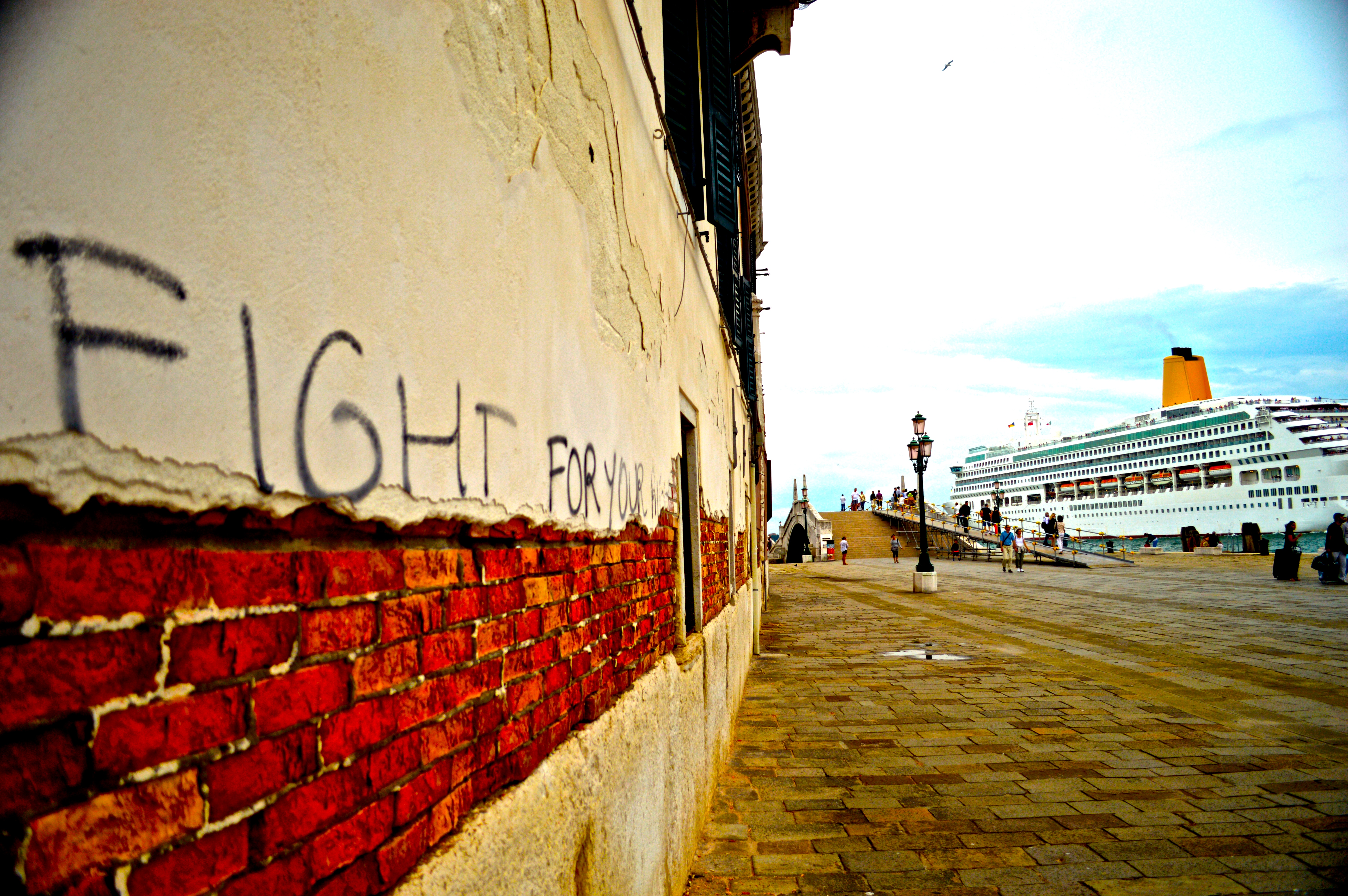
On August 8, 2014, a mandate was passed in Venice in response to the widely supported local campaign, "No Grandi Navi," (No Large Ships"). It denies cruise ships over 40,000 tons access to the Giudecca canal, which runs between San Marco and the island of Giudecca. This could be a major step towards a healthier Venice, reducing the amount of damage presumably done by these ships to the waterways and edifices facing them. However, the mandate and the thinking behind it ignore the lingering problem that other cruise ship tourists pose to the working class shopkeepers in the city.
"They come, they look, but they do not buy," mourned Paolo Olbi, a bookbinder and printmaker in the Dorsoduro neighborhood of Venice. Olbi believes that the older breed of tourist, the wealthy Euro-trippers who used to spend money in his shop, are dying out. "Americans used to be my best clients. Now, the Germans buy some," but not enough. Historically, tourists have paid through the nose to have a really "Venetian" experience.
Gondolier Roberto Nardin misses the curious tourist who would "be excited to get in the gondola and would ask me questions about the city… Now, they get in just to say that have been in a gondola." Cruise ship tourists and other day-trippers sometimes take pictures of themselves for the full 30 minutes of the gondola trip.
Olbi looks tired. He has already had to downsize from two shops and one workshop to just a single shop, with a tiny workroom in the back. Olbi's economic theory that the price of the euro is driving American tourists away from Venice is not far off the mark, and other European or Asian tourists who spend more than the "cruise day" in Venice make up a small percentage of those who walk the streets. The cruise ships dump up to 6,000 tourists in Venice for only one day. Olbi says these tourists walk the streets, "buy Gucci or Prada," and take pictures (often with the newly popular "selfie extension" pole) but scurry back to their ships—"to eat dinner at 8 on the boat."
Tourists have always supported Venice's family businesses—eating in their restaurants, buying handcrafted souvenirs. Unfortunately, tourists represent the only market for Venetian businessmen and women today, as the resident Venetian population has dropped to under 60,000. Most of the former residents commute from Mestre, on the mainland, to work in Venice for the day. Many of these people, as well as some resident Venetians, sell products specifically marketed to tourists.
Two main classes of products are targeted to tourists in Venice: the expensive and the dirt cheap. Olbi's "Gucci and Prada" are among the ranks of other couture brands flanking the narrow calle of Venice. Tourists are drawn to these brands because they know them—though as Olbi points out, "they can buy that anywhere; why come to Venice for that?"
Tourists also turn to the cheapest option: mass-manufactured Chinese goods. "For us, these masks mean bad business," remarked Nancy Mbengue, shop manager and mask maker at Ca'Macana. She shook her head sadly at the thought.
Imports to Venice have only in the past 10 years begun including plastic Venetian masks and fake Venetian glass—all "made in Italy," since these factories are, technically, in Italy somewhere. They can include this stamp on their products, and, as Jane Rushton, spokeswoman for glassmaker Berengo Industries, put it, "No tourist can tell the difference; the stamp looks the same." Even Murano glassmakers, who ruled the field since the imperial days of Venice, have to battle with mass-produced glassware that looks just like theirs.
All of this halts the cash flow from tourist to the middle-class worker and leaves artisans like Olbi in a rut. He cannot sell to native Venetians, of whom there are increasingly few, and he cannot sell to the tourists who buy fake "made in Italy" souvenirs or Gucci bags. The solution? International marketing, perhaps. Olbi wants to sell his wares to Americans again—this time by exporting them. He's tried this before and hit a snafu, but is sure that "if I can find a wealthy American, a patron," he can buck up his sales again, and maybe re-expand his shop.



